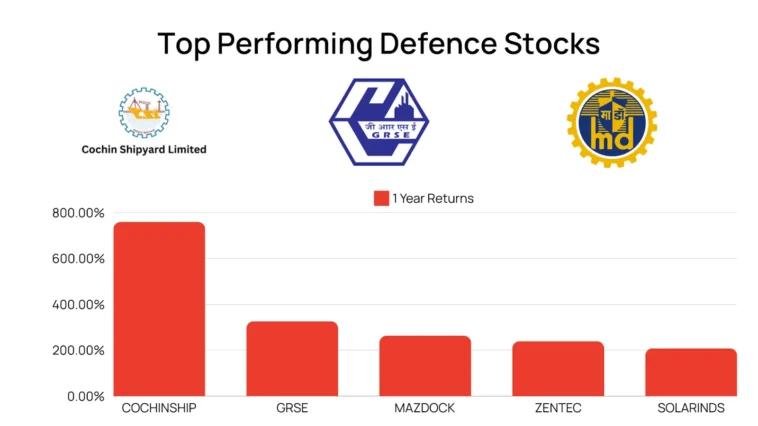India’s defence stocks experienced a widespread sell-off on Tuesday, prompted by news of a truce between Israel and Iran. This development comes after an intense period of three months during which these stocks soared. The Nifty India Defence index, a prominent indicator of the sector’s performance, saw a decline of 2.5 per cent intraday, and 16 of its 18 migrating stocks ended the day on a low.
Prominent participators in the sector such as Hindustan Aeronautics Ltd (HAL), Bharat Electronics Ltd (BEL), and Bharat Dynamics Ltd (BDL) experienced a dip as far as 4 per cent. Meanwhile, smaller industry players like Garden Reach Shipbuilders & Engineers (GRSE), BEML, Paras Defence & Space Technologies, and Astra Microwave Products felt the shock more severely with their stocks falling between 5 and 10 per cent.
Market experts have indicated that the recent rise in defence industry stocks was rooted more in sentiment, given the geopolitical volatility in the Middle East and the anticipation of hefty defence appropriations in the upcoming Union Budget. Meanwhile, the ceasefire agreement between Israel and Iran seems to have temporarily dissolved the underlying risk premium, leading to the current market correction.
With the ceasefire coming into place, the market has begun its slow journey back to normalcy, as the geopolitical premiums that had bolstered the prices of these stocks are no longer in place. It’s an apparent reason for a sentiment-led markdown being witnessed across the board.
Looking at the performance of the Nifty Defence Index, there has been a nearly 45 per cent increase since April, significantly overtaking the benchmark Nifty50 which escalated only about 9 per cent during the same timeframe. This points at how geopolitical tensions previously had been driving the defence stocks’ performance.
The downfall in the defence index is being seen by market professionals as an initial sign of weakening. The experts are closely monitoring for any bearish engulfing pattern on daily charts following a plunge below the key parameter of 8,886.
The equity market also displays double-top formations during shorter intervals, which are being kept under surveillance. Besides, the Relative Strength Index (RSI), a significant indicator tracking market movements, has begun to display unevenness relative to price action which could be a sign of an impending short-term reversal or break.
While this decline is unavoidable, experts maintain an optimistic long-term perspective on the defence sector, referencing India’s continuous progression towards self-sufficiency and rising capital expenditure in defence production.
Thus, the short-term decline might present an opportunity for investors. The current slide offers a chance for selective consolidation, given the strong long-term potentials of the defence sector.
It is worth noting that amidst the temporary turbulence, the market is gradually adjusting to the new geopolitical realities and is showing signs of a return to normalcy. This process often accompanies significant policy shifts such as the ceasefire.
Community sentiments, a crucial factor in stock market performance, may have shifted due to the ceasefire. But the broader trends indicating a thriving defence sector owing to domestic policies still remain firmly in place.
However, investors are advised to keep a close eye on market signs of any further reversal. Complex market patterns like the bearish engulfing or the double-top formation can give crucial clues about the trajectory of the market in the short-term.
With these shifts in the market, it’s important to not overlook the robust performance of the Nifty Defence Index in the recent past, largely outpacing the growth of the more generic Nifty 50.

